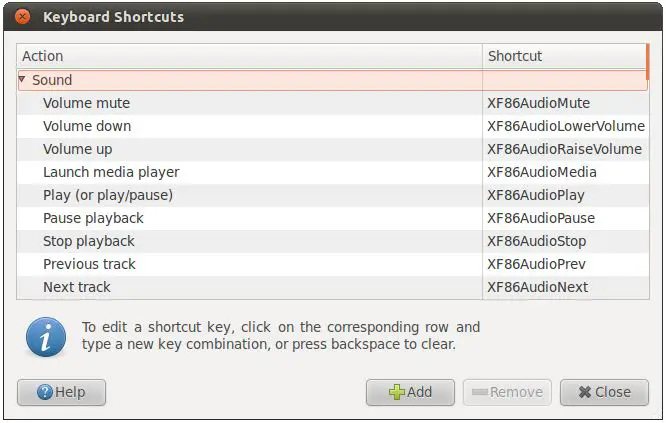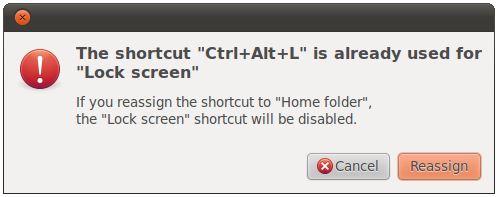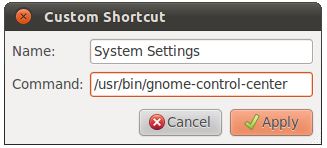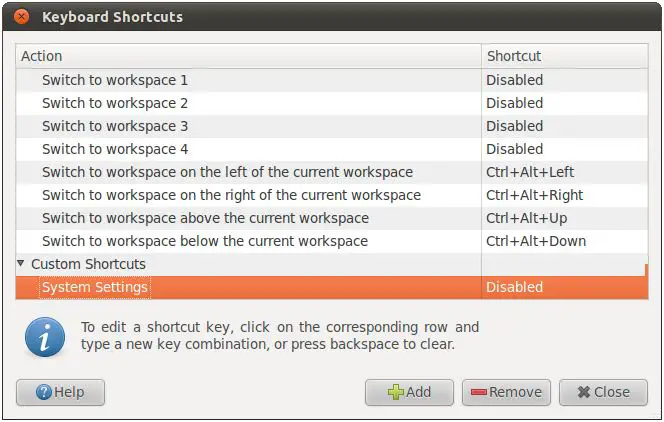Ubuntu 11.04 Unity Desktop Keyboard Shortcuts
| Previous | Table of Contents | Next |
| Ubuntu 11.04 Unity Desktop - Starting Applications on Login | Configuring Ubuntu 11.04 Printers |
<google>BUY_UBUNTU_11</google>
Ever since the advent of the graphical user interface we have been immersed in a world of pointers, mouse movements and clicks. With all this ease of use it is easy to forget that it can often be quicker to trigger something using the keyboard than to navigate through an array of menu options. This is achieved through a concept known as either keyboard shortcuts or keyboard accelerators. In this chapter we will look at the use and configuration of these shortcuts in the context of the Ubuntu Unity Desktop.
Viewing Keyboard Shortcuts
The Ubuntu 11.04 Unity desktop has a set of predefined actions to which a keyboard shortcut may be assigned. By default some of these actions already have a key sequence assigned to them. Other actions are disabled by default. As a user you have the power to view the current shortcut settings, change or disable currently configured shortcuts and to assign shortcuts to disabled actions.
To view the current configuration, select the Keyboard Shortcuts option in the Control Panel (accessed by clicking on the power button in the top right of the screen and selecting System Settings). Alternatively, the tool may be launched by pressing Alt-F2 and entering gnome-keybinding-properties into the run box. Once loaded, the following dialog will subsequently appear listing the current keyboard shortcut settings:
The shortcuts are broken down into categories; Sound, Desktop, Accessibility and Window Management. The above figure shows the Sound shortcut category. Scrolling through the list will give you a good overview of which shortcuts are currently configured and which key sequences are assigned.
Changing a Shortcut
Note that if you press a key sequence that is inappropriate for use as a shortcut a warning dialog will appear instructing you to make a different selection:
Disabling a Keyboard Shortcut
A keyboard shortcut may be disabled simply by clicking on the shortcut in the Keyboard shortcuts dialog and pressing the Back Space key. The selected shortcut will subsequently display a Disabled status.
Adding a Custom Shortcut
In addition to disabling or modifying the existing shortcuts, it is also possible to configure custom keyboard shortcuts. For the purposes of providing an example, assume that we wish to launch the System Settings Control Center when the Ctrl+Alt+C keyboard combination is triggered. To implement this functionality, begin by clicking on the Add button located at the bottom of the Keyboard Shortcuts dialog. In the resulting Custom Shortcut dialog, enter a name for the shortcut (for example, System Settings) and the path the terminal executable file (/usr/bin/gnome-control-center):
Clicking the Apply button will create the shortcut which, in turn, will appear under the Custom heading in the preferences dialog:
As illustrated in the above figure, the shortcut is disabled until a keyboard sequence is assigned to it. Select the new entry and press Ctrl+Alt+C to configure the shortcut and close the shortcuts window. Pressing Ctrl+Alt+C on the keyboard should now cause a new Control Center to appear.
<google>BUY_UBUNTU_11_BOTTOM</google>
| Previous | Table of Contents | Next |
| Ubuntu 11.04 Unity Desktop - Starting Applications on Login | Configuring Ubuntu 11.04 Printers |






